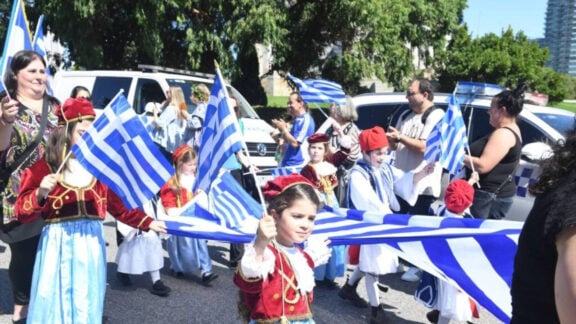Cyclone Ianos has left destruction in its wake.
Rocks buried Assos, the scenic harbour, on the west coast of Kefalonia, trapping people in their homes, causing huge destruction.
Torrential rainfalls caused rocks and mud to slide from the mountain onto the village, practically burying it under the debris.
Electricity and water has been cut for the third consecutive day as trapped villagers wait for teams to arrive in order to start cleaning the area which is inaccessible due to the landslide.
Greece’s Deputy Minister for Crisis Management and Civil Protection, Nikos Hardalias, inspected the area on Saturday afternoon. He said that “it is time for very hard work and few words” when speaking to local authorities, with the main priority being to restore electricity, water supply and road networks.
In neighbouring Ithaca, power was also cut.
States of emergency had been declared for the islands of Kefalonia, Ithaca and Zakynthos since Friday, however state aid had yet to arrive by Sunday.
READ MORE: Cyclone Ianos moves towards Crete
https://www.instagram.com/p/CFXottBFxFA/
Following the Ionian islands, the cyclone slashed through Crete after ripping through mainland Greece where rains were felt heavily in Chania as the storm moved east and southeast heading into the Libyan Sea towards Egypt. Northerly gusts of up to 8 Beaufort in velocity moved south of Crete on Sunday.
Mr Hardalias said Athens was not as badly affected as other regions.
“The weather system seems to be weakening in the region of Attica, but we must remain vigilant in the region of Arcadia, Leonidio especially, in Argolida and in Kythera,” Mr Hardalias said.
READ MORE: Cyclone Ianos wreaks destruction in Greece
In some areas there was biblical catastrophe, with damage to utility services. At Oxya Karditsas there were elderly people, a pregnant woman and a small child trapped without water or electricity.
https://www.instagram.com/p/CFXgV6XH8Mp/
The Greek fire and emergency services received 2,450 calls for help which were related to the cyclone, with most of them coming from the south Ionian islands, Western Greece, Sterea Greece, the Peloponnese and Thessaly.
There were 942 recordings of people trapped until this time, and three deaths were recorded in Thessaly.
https://www.instagram.com/p/CFX5j83JpUO/
https://www.instagram.com/p/CFXekHOp2x2/
https://www.instagram.com/p/CFXYz4kJ14N/
https://www.instagram.com/p/CFXM1IiJJo-/








